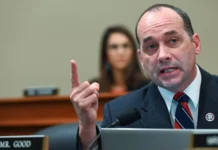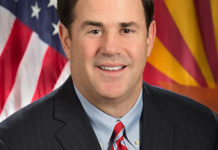I am proud to represent Arizona’s First Congressional District, which is home to the Grand Canyon.
I remember the first time I visited the Grand Canyon, and the first time I showed it to my grandchildren. Anyone who has been lucky enough to visit this natural wonder can see that it is truly a national treasure.
Last week, the House of Representatives took historic action to protect this treasure by passing the Grand Canyon Centennial Protection Act.
This legislation does more than just preserve our canyon for the enjoyment of future generations. It protects the health of Arizonans, our water supply, and our state’s tourism economy. It also safeguards this culturally and religiously significant place for many Native American communities.
To this day, uranium mining has a toxic legacy in northern Arizona. Cancer diagnoses among families living in nearby communities are extremely high when compared to the national average. Studies have shown that this is a direct result of uranium exposure in the area.
On the Navajo Nation alone, there are over 500 abandoned uranium mine sites. Tens of thousands of individuals — including miners, transporters, and other employees who worked directly in uranium mines — along with communities located near nuclear weapon test sites, were exposed during the mid-1900s to dangerous radiation that has left communities struggling from cancer, birth defects, and other illnesses.
Unfortunately, uranium mining affects more than the health of our people — it jeopardizes the health of our water as well. Forty million people rely on the Colorado River and local aquafers for their water supply. Uranium mining contamination has the power to pollute this water source beyond repair and exacerbate a drought that has already plagued the southwest for years.
The Grand Canyon is the engine of Arizona’s tourism economy. Yearly, the Canyon brings in over six million tourists to rural Arizona. These visitors spend billions of dollars in our local economy and support tens of thousands of jobs across the region.
Furthermore, it is important to note that this withdrawal from new uranium mining claims does not jeopardize our energy market or our national security by forcing us to seek foreign sources. According to federal data, both New Mexico and Wyoming have three times the amount of uranium reserves as Arizona, Colorado, and Utah have combined. Our uranium imports are lower than they have been in fifteen years, and Canada is our largest supplier.
Above all else, the Grand Canyon is, and will always remain, a place of deep spiritual significance to many native communities in the southwest, and a home to the Havasupai Tribe. It is due largely in part to the work and firsthand knowledge of these Native American communities that this historic legislation was brought to the forefront of our national discussion, and to the floor of the House of Representatives for a vote.
The Grand Canyon Centennial Protection Act takes a crucial first step in safeguarding our communities and our water from the dangers of uranium mining. We must ensure that the senate takes up this important bill and gets it to the president’s desk to be signed into law. We must also ensure that we continue to work to reclaim and remediate abandoned mine sites and help to mitigate health risks for nearby families.
To open the Grand Canyon to uranium mining is to ignore our responsibility to the communities who find it sacred and the millions of Americans whose water flows from it. I look forward to collaborating with my colleagues on both sides of the aisle, local stakeholders and advocates, and members of our Native American communities to ensure this bill becomes law. The Grand Canyon is too precious to lose.
Tom O’Halleran is a member of the U.S. House of Representatives from Arizona’s District 1. A Democrat, he lives in the village of Oak Creek.














